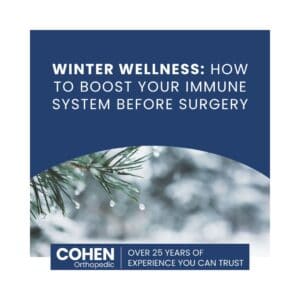Tendonitis Vs. Tendon Tear
Tendonitis vs. Tendon Tears: Understanding the Key Differences

Tendon injuries are common, especially among active individuals, athletes, and those who engage in repetitive movements. Two of the most frequent tendon-related injuries are tendonitis and tendon tears. Though both conditions affect the tendons, they have distinct causes, symptoms, and treatment approaches. Understanding the differences between tendonitis and tendon tears is important in order to manage the injury effectively and prevent further damage.
In this blog, we’ll explore the key differences between tendonitis and tendon tears, how to recognize each condition, and the best ways to treat and prevent them.
What Are Tendons?
Before diving into the specifics of tendonitis and tendon tears, it’s helpful to understand what tendons are and their role in the body. Tendons are thick, fibrous connective tissues that attach muscles to bones. They allow for movement by transferring the force from muscle contractions to the bones, enabling us to move our limbs and joints. When tendons are injured, they can significantly impact mobility and quality of life.
What is Tendonitis?
Tendonitis (also called tendinitis) refers to inflammation or irritation of a tendon, usually caused by repetitive use or overuse. This condition is often seen in athletes, laborers, or individuals who engage in activities that involve repetitive motion, like running, lifting, or playing sports.
Common Causes of Tendonitis:
- Repetitive movement or overuse
- Poor posture or body mechanics during physical activity
- Aging, which leads to wear and tear of tendons
- Weak or unbalanced muscles around the tendon
- Direct trauma or injury to the tendon
Symptoms of Tendonitis:
- Pain or tenderness along the affected tendon, often aggravated by movement
- Swelling and warmth around the tendon
- Limited range of motion or stiffness
- Pain during specific activities that stress the tendon (like climbing stairs or lifting objects)
Treatment for Tendonitis:
The main goal in treating tendonitis is to reduce inflammation and alleviate pain, while allowing the tendon to heal. Common treatments include:
- Rest: Avoid activities that exacerbate the pain.
- Ice: Apply ice to the injured area to reduce swelling and inflammation.
- Compression: Use an elastic bandage or compression wrap to reduce swelling.
- Elevation: Raise the injured area to help reduce swelling.
- Physical Therapy: Stretching and strengthening exercises can help improve the function of the tendon and prevent future injury.
- Anti-inflammatory medications: Over-the-counter pain relievers, such as ibuprofen or aspirin, can help manage pain and inflammation.
- Steroid Injections: In severe cases, a healthcare provider may administer corticosteroid injections to reduce inflammation.
In most cases, tendonitis can be managed conservatively with rest, rehabilitation exercises, and pain management. Recovery time varies depending on the severity of the injury, but it typically takes several weeks to months.
What is a Tendon Tear?
A tendon tear is a more severe injury where the tendon actually ruptures or tears. This injury can range from a partial tear, where some fibers of the tendon are damaged, to a complete tear where the tendon is completely severed. Tendon tears can occur suddenly, often as a result of trauma or intense physical activity, or they can develop over time due to chronic wear and tear.
Common Causes of Tendon Tears:
- Sudden, intense movements: Activities like jumping, running, or lifting heavy weights can lead to an abrupt tear.
- Chronic tendon degeneration: Over time, tendons can weaken and become more prone to tearing due to aging or repeated overuse.
- Direct trauma or impact: A fall or blow to the body can cause a tendon tear, especially in areas like the shoulder or Achilles tendon.
- Inadequate warm-up: Failing to properly warm up before exercise can strain the tendons and increase the risk of tears.
Symptoms of a Tendon Tear:
- Sudden, sharp pain at the time of injury, often accompanied by a popping or snapping sound
- Severe weakness or an inability to move the affected joint or muscle
- Swelling and bruising around the tear site
- Limited range of motion in the joint or muscle
- Visible deformity or an unusual gap where the tendon has torn (in cases of complete tears)
Treatment for Tendon Tears:
Treatment for tendon tears varies depending on the severity of the tear and the location of the injury. A minor or partial tear may be managed conservatively, but a complete tear often requires surgical intervention.
- Rest and ice: Like tendonitis, immediate rest and ice application can help reduce swelling and inflammation.
- Physical therapy: Strengthening exercises and rehabilitation are vital for recovery.
- Surgical repair: For complete tendon tears, surgery is often necessary to reattach the torn tendon to the bone or to repair the damaged tendon.
- Immobilization: A brace, splint, or cast may be used to keep the affected area stable while it heals.
- Pain management: Stronger medications or injections may be needed for more severe tears.
Recovery from a tendon tear can be a lengthy process, especially for more severe injuries. It may take months of rehabilitation, and in some cases, patients may not fully regain strength or range of motion. The key to recovery is following the advice of a healthcare professional and allowing adequate time for healing.
How to Prevent Tendon Injuries
While tendonitis and tendon tears can happen to anyone, there are steps you can take to reduce the risk of injury:
- Warm-up and stretch before any physical activity.
- Strengthen muscles around the tendons to support and stabilize them.
- Avoid overuse by incorporating rest days into your routine.
- Use proper technique when lifting or performing any strenuous activities.
- Stay hydrated to keep tissues healthy and maintain joint function.
Conclusion
Tendonitis and tendon tears are both common injuries, but they differ significantly in their causes, symptoms, and treatment approaches. Tendonitis is usually caused by overuse and leads to inflammation, while tendon tears are more severe, often resulting from sudden trauma or degeneration over time. Understanding these differences can help you recognize the type of injury you’re dealing with and take the appropriate steps for recovery.
If you suspect you have either tendonitis or a tendon tear, it’s always best to consult with a healthcare professional for a proper diagnosis and treatment plan. With the right care and patience, most tendon injuries can be healed, allowing you to get back to your active life.










